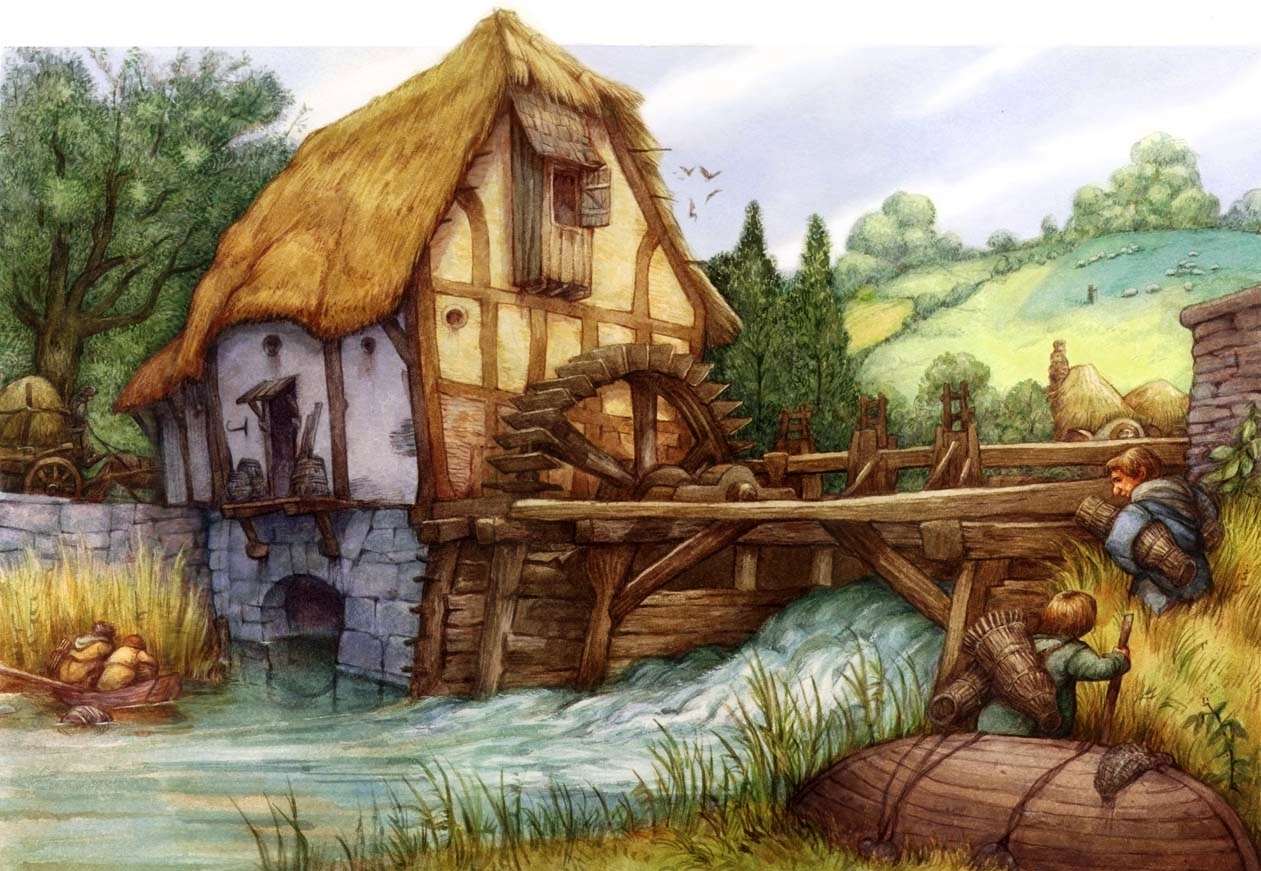Difference between revisions of "Fulling Mill"
Tao alexis (talk | contribs) |
Tao alexis (talk | contribs) |
||
| Line 16: | Line 16: | ||
Because a fulling mill demands less force than a gristmill, it can be run upon a [[River|river]] that is only 1 pt. wide; fulling mill can also be driven by [[Windmill|wind power]]. | Because a fulling mill demands less force than a gristmill, it can be run upon a [[River|river]] that is only 1 pt. wide; fulling mill can also be driven by [[Windmill|wind power]]. | ||
| − | Fulling mills only exist in provinces that possess at least one cloth-making or clothing | + | Fulling mills only exist in provinces that possess at least one fibre-growing, cloth-making or clothing [[Trade References|reference]]. Otherwise, there isn't sufficient need for their construction. |
Revision as of 23:00, 22 December 2022
Fulling mills are large buildings resembling gristmills, constructed for the purpose of completing the process of cleansing carded or combed wool, by matting the fibres together to give them strength. Most fulling continues to be done by hand instead of by mills, as machinery for the purpose is primitive; however, fulling mills do exist in type-6 or more developed hexes.
The fulling capacity for a fulling mill is between 25 and 100 lbs. of spun fibre per day, depending on the efficiency of the mill. Once the thread is produced, it's sacked and made ready for transport for use by weaving guilds.
These mills are typically, but not always, managed by an extended family. Rolling 2d6, a roll of less than 7 would suggest one couple and children, whereas 8-12 persons would suggest two or more related couples and siblings.
Construction
Water power is used to turn a wheel, attached to an axle, which incorporates a cam that allows a massive hammer to pound continuously, producing agitation in wool fibres sitting in water-filled trays under the hammer's blows. The process is also used to clean and whiten woollen cloth.
Another arrangement is employed for the rolling and scutching of pulled cotton or retted flax. This brings these fibres into a state for weaving cotton cloth or linen. Similar milling arrangements are designed for managing other fibres such as jute or hemp, but fulling mills for these fibres are rare.
Minimally sized gristmills possess square or rounded spaces, 760 sq. ft. in area, with a height of 22 ft. The wheel must be at least 15 ft. in diameter. They require authority status knowledge to construct. Larger fulling mills are impractical; the efficiency depends on the reliability of the stream and the skill of the operator in overseeing the process at work.
Location
Because a fulling mill demands less force than a gristmill, it can be run upon a river that is only 1 pt. wide; fulling mill can also be driven by wind power.
Fulling mills only exist in provinces that possess at least one fibre-growing, cloth-making or clothing reference. Otherwise, there isn't sufficient need for their construction.
See also,
Hammer (symbol)
The Adventure
